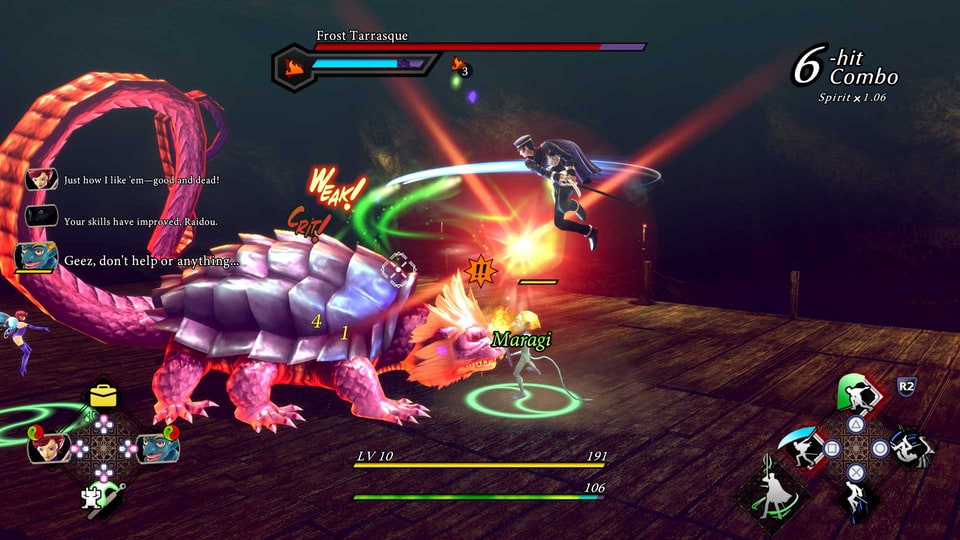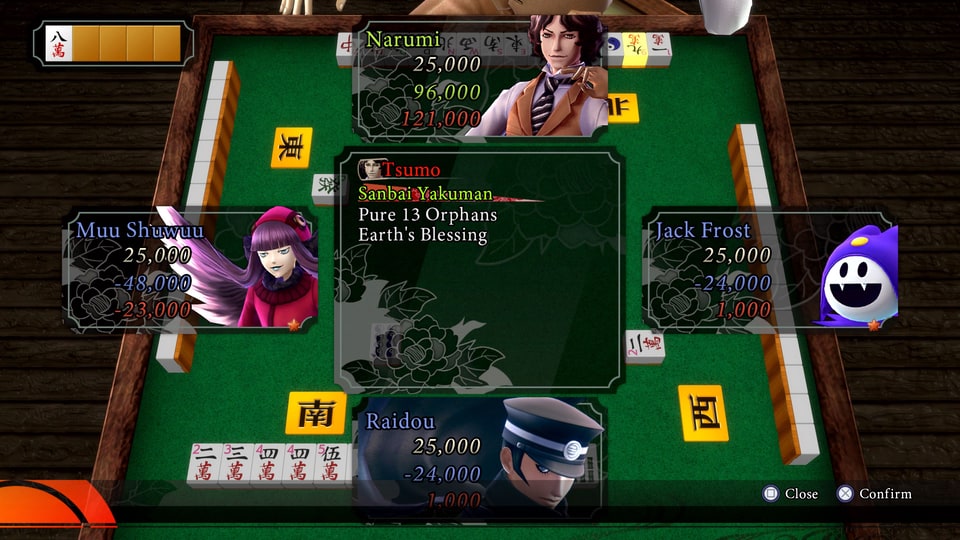Our world is eternally on a knife’s edge, separated from demon incursion by the thinnest of membranes. If you’ve played anything remotely Persona-adjacent, you will know this well — it’s the core premise of all Megami Tensei games, and Raidou Remastered: The Mystery of the Soulless Army is no different.
Despite the name not really giving it away, this is technically a remaster of Shin Megami Tensei Devil Summoner: Raidou Kuzunoha vs. the Soulless Army. Tell me your game is Japanese without telling me it’s Japanese, in 11 words or more, if you please…
While SMTDSRKvtSA is technically the third game in the series, you don’t need to have played the first two, especially as this game kicks off with Raidou becoming Raidou. Once you get past the tutorial, where you learn how to swing a sword, fire a pistol and ultimately summon a demon (or a devil, as the terms are used interchangeably throughout the game for no reason whatsoever), you are bestowed the moniker Raidou Kuzunoha XIV.
The 14th of your name, Raidou of clan Kuzunoha is always the last line of defence, living in the shadows so that humanity can live in the light, blissfully ignorant of the horrors behind the veil. Your boss, the three-legged crow god Yatagarasu (an occasional demon you can befriend in the SMT/Persona games), tasks you with becoming a detective in the capital, Tokyo, and helping those plagued by the supernatural in the fictional year Taisho 20 (Showa 5 or 1931 in our timeline, since Emperor Taisho died in 1926).
It’s a really cool premise, and this is a great Atlus title if you’re in the market for something shorter than the usual 120h+ romp that is the Persona series. Fans will recognise all the usual mechanics, from demon fusion to the effective mascot Jack Frost, which are always welcome. As with the other SMT games, the ability to chat to demons is also back, with some actively giving you side missions as you go about your quest.
So what is that quest, exactly? You are asked by a young lady to kill her before she is abducted by some mysterious, red-cloaked demons. Instead, you set about trying to find and rescue her, as mysterious forces (and plenty of zombies) stand in your way.
This brings us to combat, which is always a core part of SMT-adjacent games. Along with the usual demon capture and negotiation stuff, we have a completely new take on battle.

Rather than the usual turn-based combat, each encounter is a real-time melee; you have up to two demons at your side, who automatically attack enemies, drawing on your MP to cast powerful spells. Your mana is constantly replenishing as you attack, meaning that you are actually more of a support character in all but the boss fights. This is where the tactics really come into it; Raidou has access to some basic elemental magic and can command his demons to perform specific actions, but having an army at your disposal with different strengths and weaknesses, and adjusting Raidou’s build to the task at hand, is vital to your success.
This all helps combat feel fresh and fluid, especially when you consider the regenerating MP bar is new to the remaster. Previously, you’d have to stop and rest to recover your MP, which seriously threw off the pacing. Now, you feel like an unstoppable badass, and truly worthy of a name as epic as Raido Kuzunoha XIV.
But for all its fluidity, combat also has a massive flaw: there is little to no point in using heavy attacks, as the light attacks are the only ones that drain MP. There is no way your heavy attack will come close to what these demons put out when they’re throwing massive fireballs across the room, and if you can have literal Thor summoning lightning bolts at an enemy that’s weak to lighting, you’re going to want to have all the MP that Thor requires, aren’t you? Trust me when I say you can get through the whole game without using heavy attacks.

So how does the rest of the game play out? I’m pleased to say, very well.
It’s an intriguing and morish story, backed by an excellent, funky soundtrack. It’s great fun exploring Tokyo and using your demons to solve problems, whether that’s Alp reading people’s minds and whispering in your ear or Obariyon punching a car out of the way so you can pass. The characters you meet are colourful and the world seems pretty well lived in. The story is too short to say any more than this, sadly.
Unfortunately, there are also a few areas that are a little shaky — the graphics are gorgeous when in cutscenes, but far from perfect the rest of the time. The eyes are stylised, so we can overlook that, but the teeth are just jarring.

There’s also the curious inclusion of a poorly explained lunar system and the mahjong mini game that was cut from Western releases of SMTDSRKvtSA. The game simply assumes you know how to play mahjong and runs with it — while there are explanations if you go digging in your cat’s journal, Raidou Remastered does a poor job of explaining mahjong. As someone who has played a lot of card games over the years, and sat down watching YouTube videos on how to play mahjong, I was still left flummoxed as to how it worked in Raidou.
Beyond that, I have minor gripes like the game giving scant detail when you fuse or meet a new demon — all of which have real-world mythology that the kind of people who like these games like knowing about. A few times I found myself pausing the game to look up a new demon on Wikipedia because I couldn’t find the in-game bio. But all told, these aren’t things that should hold you back from playing.


